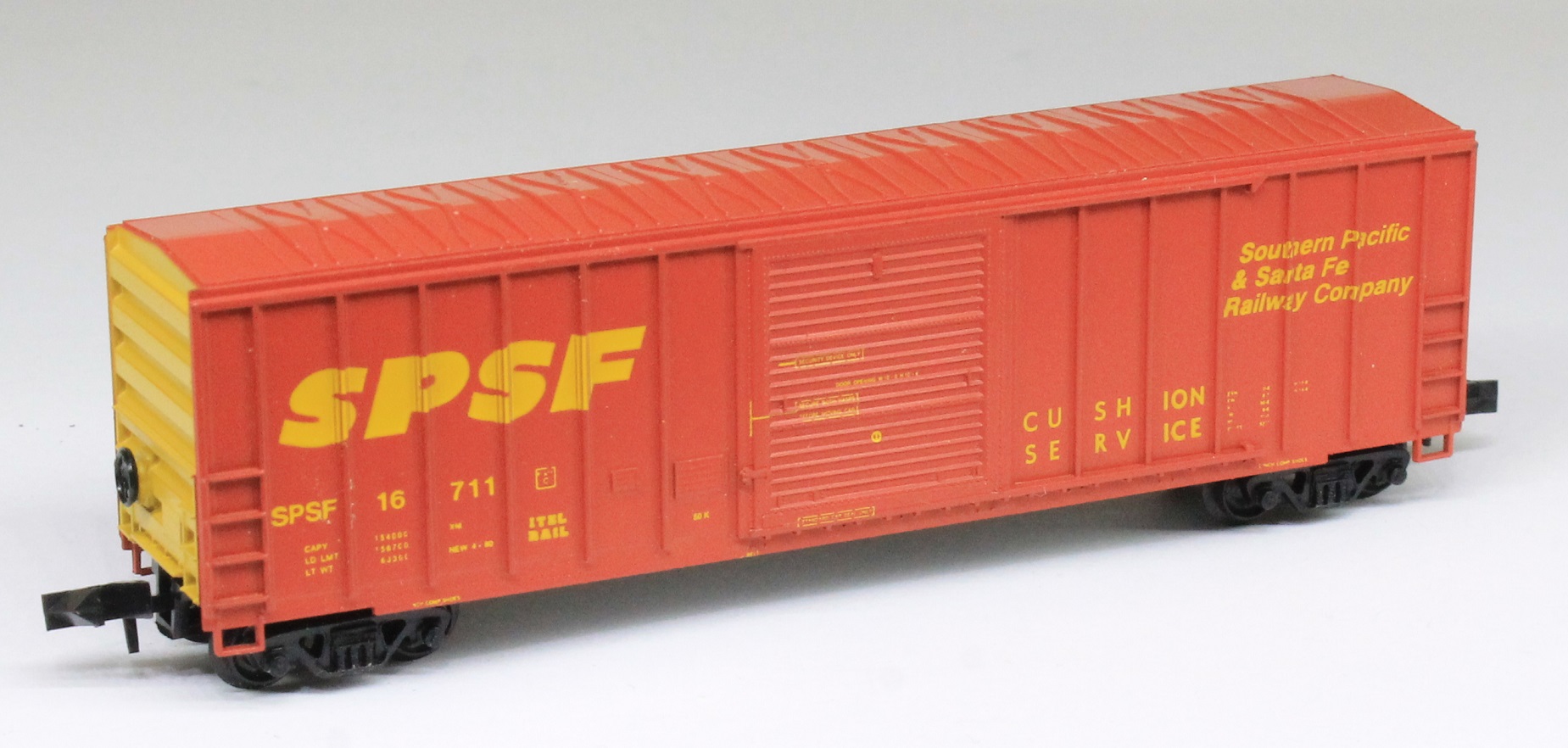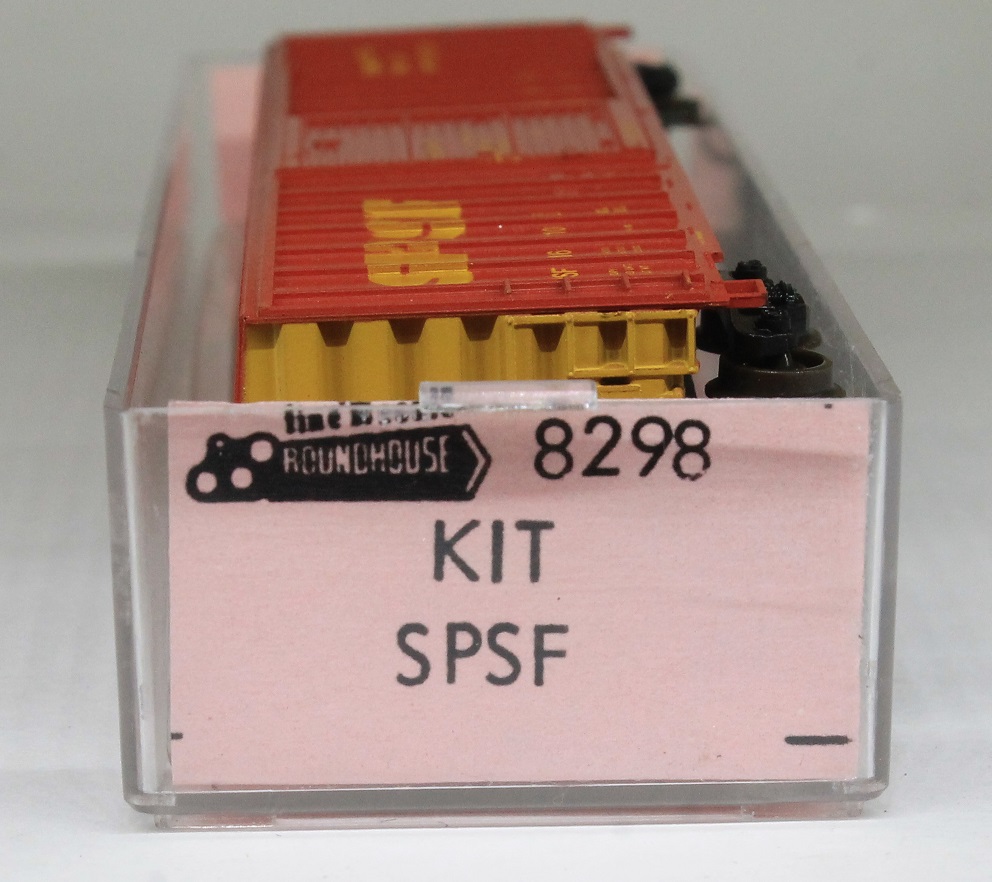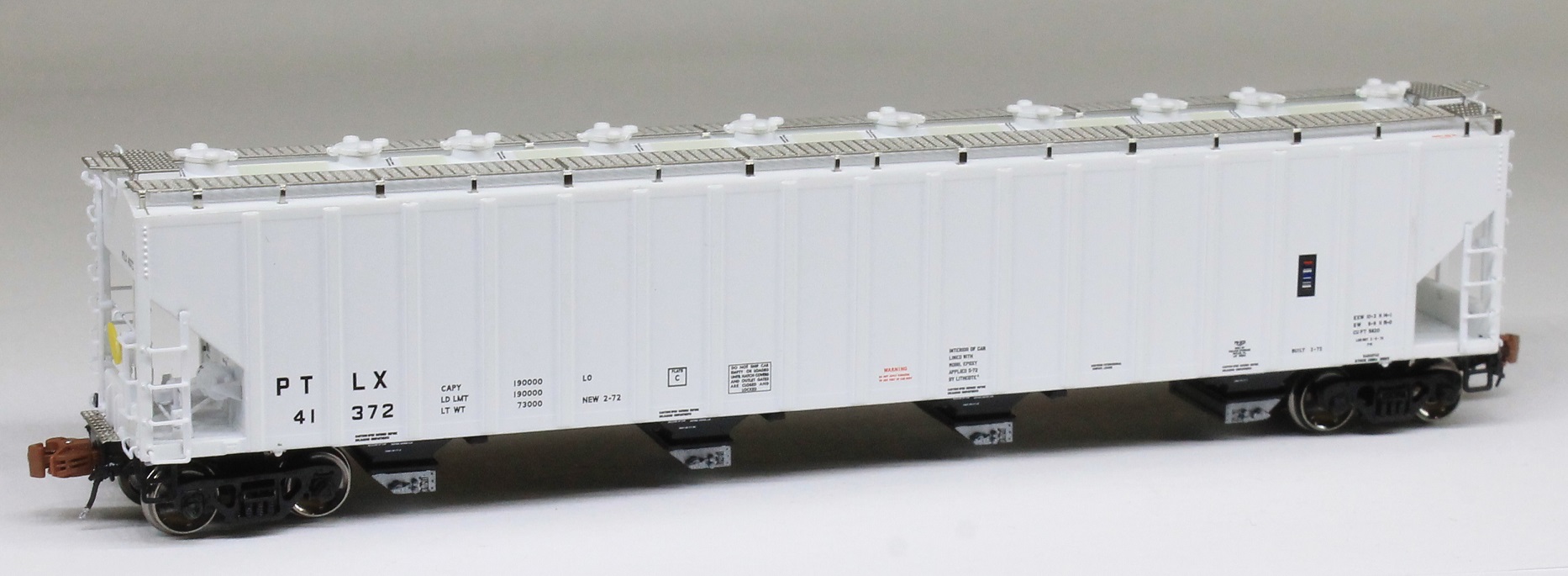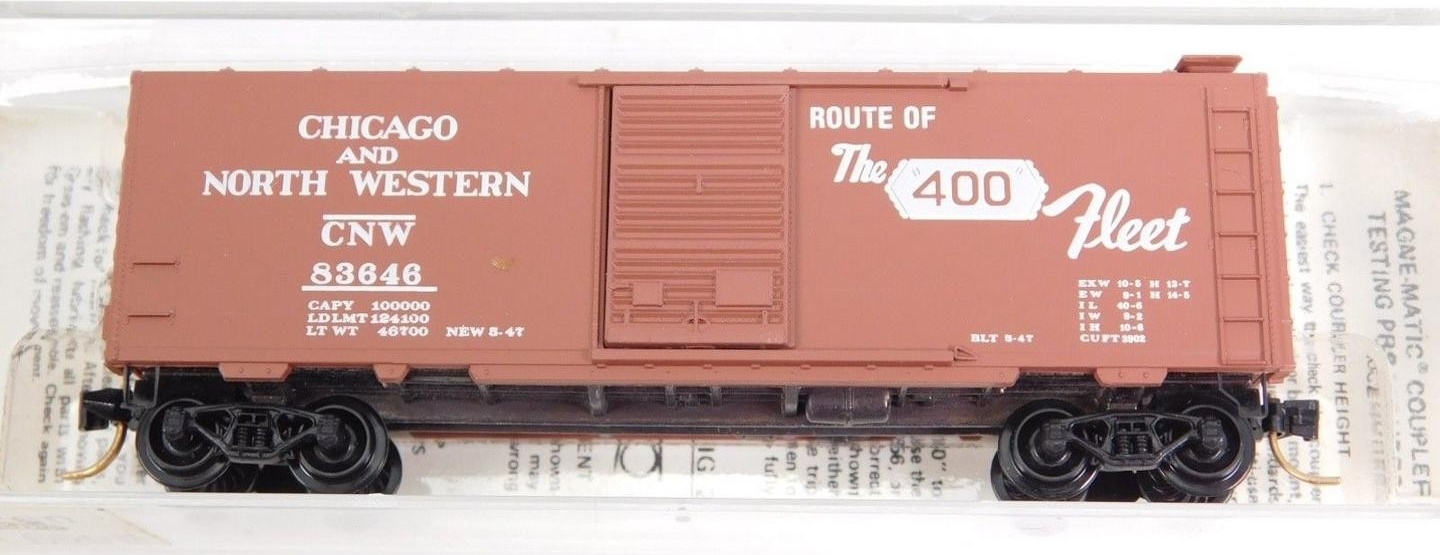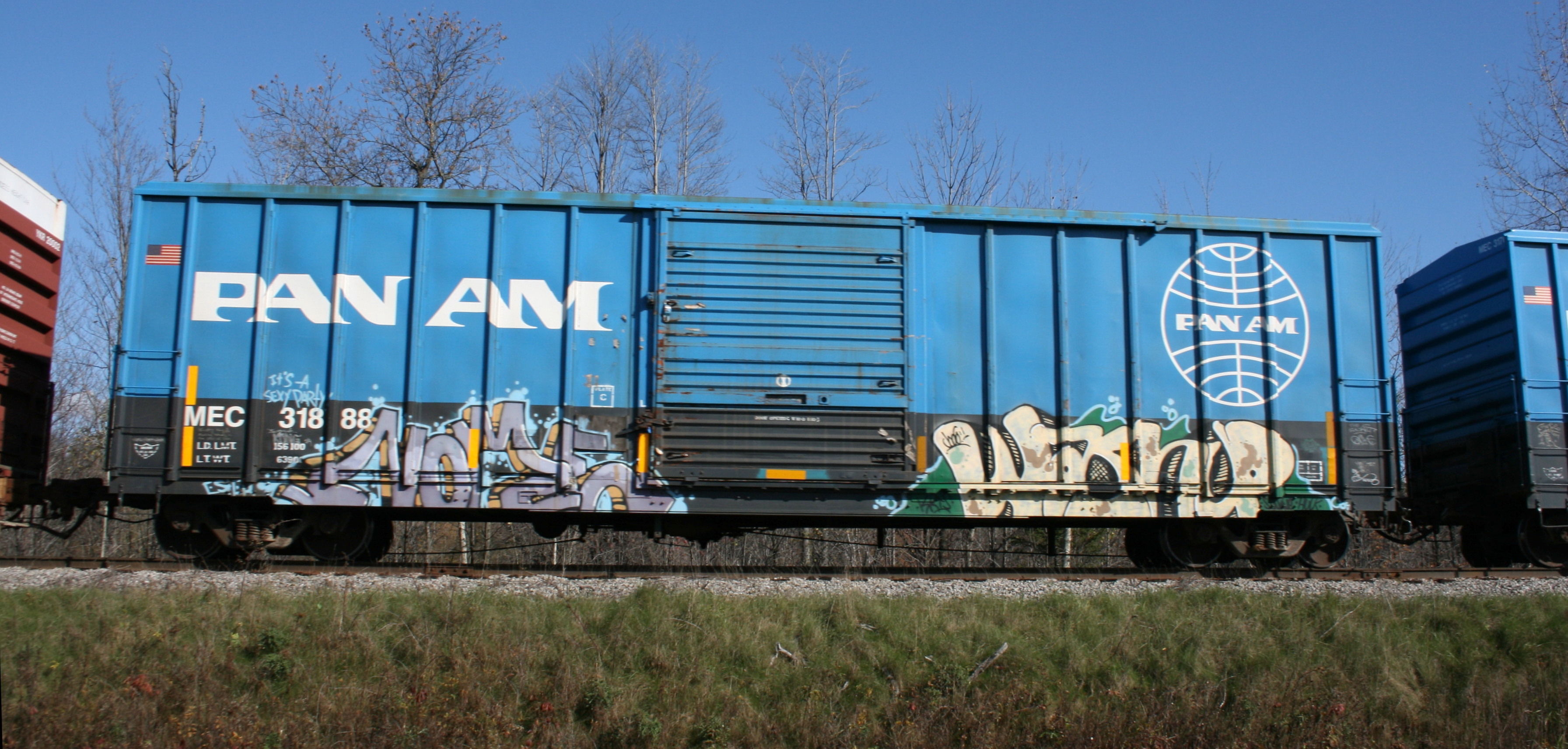Model Information: Single Sliding Door Rib Side Without Roofwalk FMC. Originally designed by MDC Roundhouse. This tooling was acquired by Athearn in June of 2004 and re-released under the Athearn name. The MDC releases referred to this tooling as "FMC 50 Foot Boxcar - Single Door". Athearn refers to them as "FMC 5347 Box Car(sic)", but they are the same model.
The MDC Roundhouse releases typically came as kits (though some later releases were RTR) with an unpainted pewter underframe and truck-mounted couplers and blackened low-profile metal wheels. The Athearn releases have a nicer set of wheels (also low-profile). The Athearn models are always Ready-to-Run (RTR). The Athearn models have painted (black) underframes that are also metal (likely pewter or whatever MDC used). Athearn moved the couplers to become body-mounted and changed the coupling system from Rapido to McHenry. After inspecting them closely, I am not sure they can be swapped for MTL couplers without filing off part of the underframe, but I could be wrong. This presents a problem as McHenry couplers don't always play well with other couplers on long consists where that is a lot of force on each coupling point. The body has remained unchanged with the only detail part being the brake wheel.
The newer releases of this body style (as of 2017) market this boxcar as specifically modelling the FMC 5347 prototype.
The MDC Roundhouse releases typically came as kits (though some later releases were RTR) with an unpainted pewter underframe and truck-mounted couplers and blackened low-profile metal wheels. The Athearn releases have a nicer set of wheels (also low-profile). The Athearn models are always Ready-to-Run (RTR). The Athearn models have painted (black) underframes that are also metal (likely pewter or whatever MDC used). Athearn moved the couplers to become body-mounted and changed the coupling system from Rapido to McHenry. After inspecting them closely, I am not sure they can be swapped for MTL couplers without filing off part of the underframe, but I could be wrong. This presents a problem as McHenry couplers don't always play well with other couplers on long consists where that is a lot of force on each coupling point. The body has remained unchanged with the only detail part being the brake wheel.
The newer releases of this body style (as of 2017) market this boxcar as specifically modelling the FMC 5347 prototype.
Prototype History: It was the mid 1970s, and the incentive per diem box car boom was just beginning. New, brightly painted box cars seemed to appear overnight. Many were lettered for various short lines. FMC (Food Machinery Corporation) was a significant builder of many of these cars. The 50’ outside post, non-terminating end box car, became the foundation for new per diem cars built in the 1970s. The 50’ FMC cars also varied in door configuration and style to better suit each customer. These cars can still be seen today at work (2017) on many ralroads.
The main difference between the 5077 cu. ft cars built by FMC vs the 5277-5347 cu. ft cars built by the same manufacturers is the overall height of the car, the smaller 5077 cars were Plate B while the larger 5277-5347 cars were Plate C.
The main difference between the 5077 cu. ft cars built by FMC vs the 5277-5347 cu. ft cars built by the same manufacturers is the overall height of the car, the smaller 5077 cars were Plate B while the larger 5277-5347 cars were Plate C.
Road Name History: 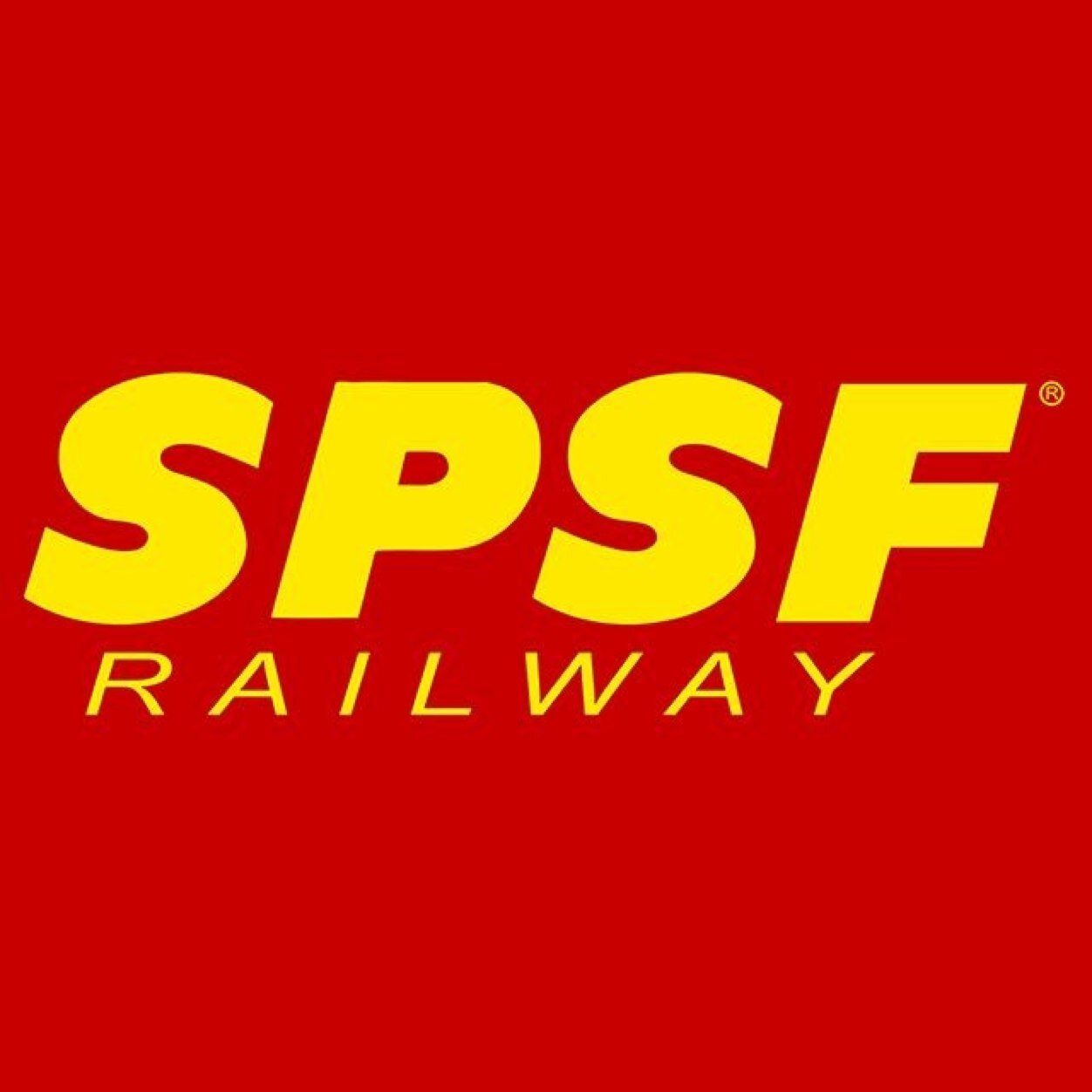 In the 1980s, The Atchison, Topeka and Santa Fe Railway (SF) and Southern Pacific Transportation Company (SP) attempted a merger. It began with the merger of holding companies Santa Fe Industries and the second incarnation of the Southern Pacific Company on December 23, 1983 to form the Santa Fe Southern Pacific Corporation (SFSP), which held the SP shares in a voting trust. After the Interstate Commerce Commission denied the merger, SFSP sold the SP to Rio Grande Industries on October 13, 1988, and was renamed Santa Fe Pacific Corporation on April 25, 1989.
In the 1980s, The Atchison, Topeka and Santa Fe Railway (SF) and Southern Pacific Transportation Company (SP) attempted a merger. It began with the merger of holding companies Santa Fe Industries and the second incarnation of the Southern Pacific Company on December 23, 1983 to form the Santa Fe Southern Pacific Corporation (SFSP), which held the SP shares in a voting trust. After the Interstate Commerce Commission denied the merger, SFSP sold the SP to Rio Grande Industries on October 13, 1988, and was renamed Santa Fe Pacific Corporation on April 25, 1989.
The merger was opposed by the Justice Department in 1985 and denied in a 4–1 vote by the Interstate Commerce Commission (ICC) on July 24, 1986, who ruled that such a merger included too many duplicate routes and was therefore monopolistic. The Commission denied SFSP's appeal (again in a 4–1 vote) on June 30, 1987.
The holding company, ordered to operate the Southern Pacific at arm's length until it sold it, disposed of it on October 13, 1988 to Rio Grande Industries for $1.02 billion and the assumption of SP's debt, which consolidated the SP with its Denver and Rio Grande Western railroad under the Southern Pacific name. The holding company retained all the non-rail interests of both predecessors and shortened its name to Santa Fe Pacific Corporation (though all of the California real estate holdings were consolidated in a new company, Catellus Development Corporation, becoming the State's largest private land owner. Catellus subsequently purchased the Union Pacific Railroad's interest in the Los Angeles Union Passenger Terminal).
In 1995, the Santa Fe railroad merged with the Burlington Northern Railroad to form the Burlington Northern and Santa Fe Railway (BNSF), and the SP was bought out by the Union Pacific Corporation the following year.
From Wikipedia

The merger was opposed by the Justice Department in 1985 and denied in a 4–1 vote by the Interstate Commerce Commission (ICC) on July 24, 1986, who ruled that such a merger included too many duplicate routes and was therefore monopolistic. The Commission denied SFSP's appeal (again in a 4–1 vote) on June 30, 1987.
The holding company, ordered to operate the Southern Pacific at arm's length until it sold it, disposed of it on October 13, 1988 to Rio Grande Industries for $1.02 billion and the assumption of SP's debt, which consolidated the SP with its Denver and Rio Grande Western railroad under the Southern Pacific name. The holding company retained all the non-rail interests of both predecessors and shortened its name to Santa Fe Pacific Corporation (though all of the California real estate holdings were consolidated in a new company, Catellus Development Corporation, becoming the State's largest private land owner. Catellus subsequently purchased the Union Pacific Railroad's interest in the Los Angeles Union Passenger Terminal).
In 1995, the Santa Fe railroad merged with the Burlington Northern Railroad to form the Burlington Northern and Santa Fe Railway (BNSF), and the SP was bought out by the Union Pacific Corporation the following year.
From Wikipedia
Brand/Importer Information:  MDC Roundhouse was founded in California in 1938 and relocated in 1993 to Carson City, Nevada due to statewide restrictions on painting. MDC Roundhouse was a producer of both RTR (Ready-to-Run) and kit versions of N Scale rolling stock as well as RTR locomotives. They entered the N scale market in 1979 with a Thrall Hi-Side Gondola and a Hi-Cube Single Door Box Car. MDC Roundhouse was purchased by Horizon Hobbies in June of 2004, when its owner since 1938 C. H. Menteer retired, and merged into their Athearn line.
MDC Roundhouse was founded in California in 1938 and relocated in 1993 to Carson City, Nevada due to statewide restrictions on painting. MDC Roundhouse was a producer of both RTR (Ready-to-Run) and kit versions of N Scale rolling stock as well as RTR locomotives. They entered the N scale market in 1979 with a Thrall Hi-Side Gondola and a Hi-Cube Single Door Box Car. MDC Roundhouse was purchased by Horizon Hobbies in June of 2004, when its owner since 1938 C. H. Menteer retired, and merged into their Athearn line.
Unlike many of their contemporaries which contracted with European firms to produce their products, MDC made their own toolings. They made several popular body styles and produced them for road names that many other vendors (even Micro-Trains) wouldn't touch. This made them popular with modelers. Also, their un-assembled "kits" permitted a lower price point so they were popular with "runners" as well as "modelers".
Of particular interest was the attention given to modern 50 foot steel boxcars. They made some attempt to accurately mold the differences into distinct models to represent each of the major prototype manufacturers products. They have distinct toolings not only for the different products from FMC, BFF and PS, but also multiple models for each of these manufacturers including "standard" vs "Youngstown" doors and "waffle" vs. "rib" sides. In total they produced 13 different versions of the 50 foot steel boxcar.

Unlike many of their contemporaries which contracted with European firms to produce their products, MDC made their own toolings. They made several popular body styles and produced them for road names that many other vendors (even Micro-Trains) wouldn't touch. This made them popular with modelers. Also, their un-assembled "kits" permitted a lower price point so they were popular with "runners" as well as "modelers".
Of particular interest was the attention given to modern 50 foot steel boxcars. They made some attempt to accurately mold the differences into distinct models to represent each of the major prototype manufacturers products. They have distinct toolings not only for the different products from FMC, BFF and PS, but also multiple models for each of these manufacturers including "standard" vs "Youngstown" doors and "waffle" vs. "rib" sides. In total they produced 13 different versions of the 50 foot steel boxcar.
Item created by: gdm on 2017-05-21 06:21:34. Last edited by baggedbird on 2024-04-15 22:09:40
If you see errors or missing data in this entry, please feel free to log in and edit it. Anyone with a Gmail account can log in instantly.
If you see errors or missing data in this entry, please feel free to log in and edit it. Anyone with a Gmail account can log in instantly.


